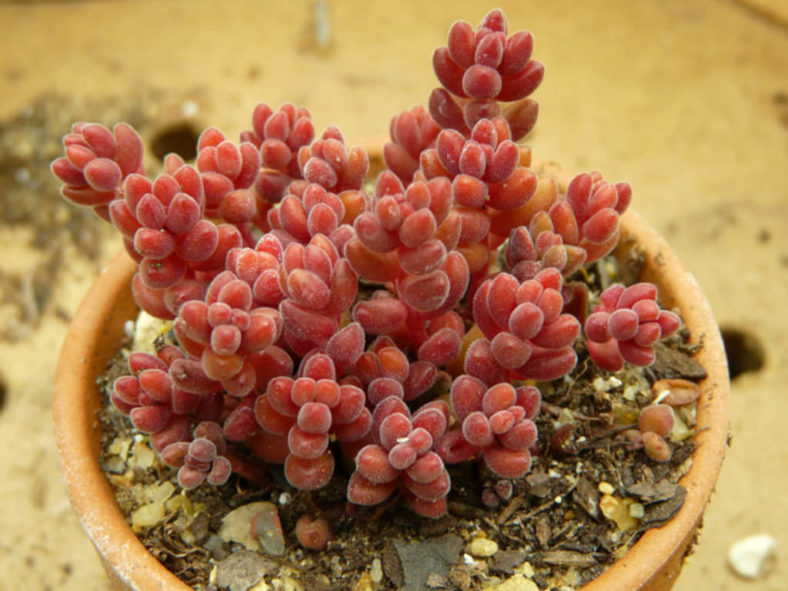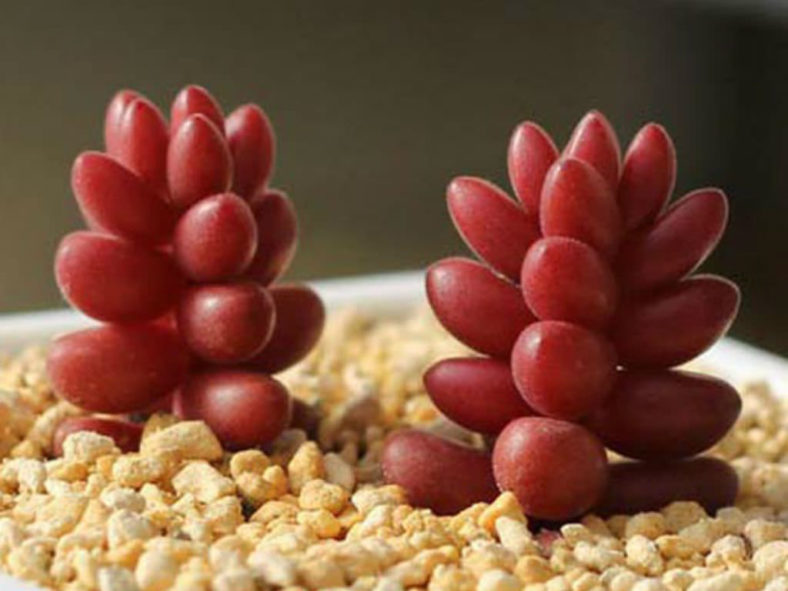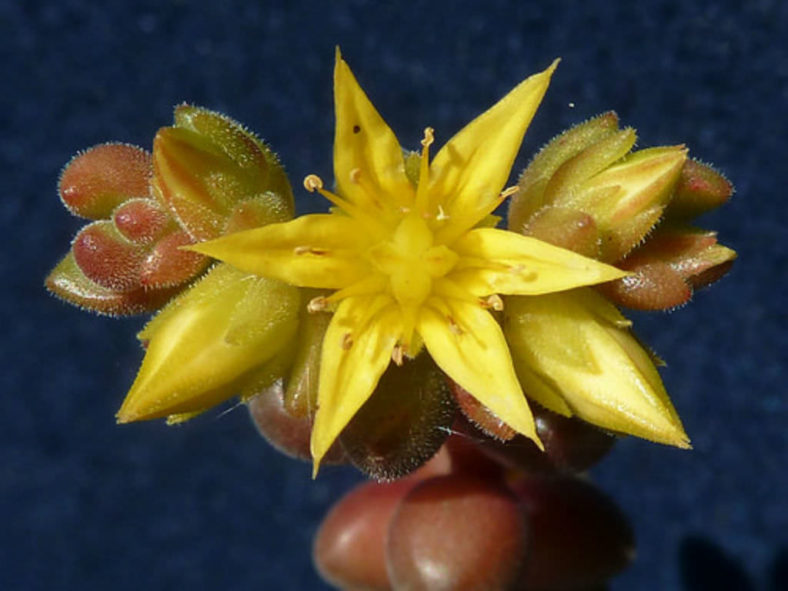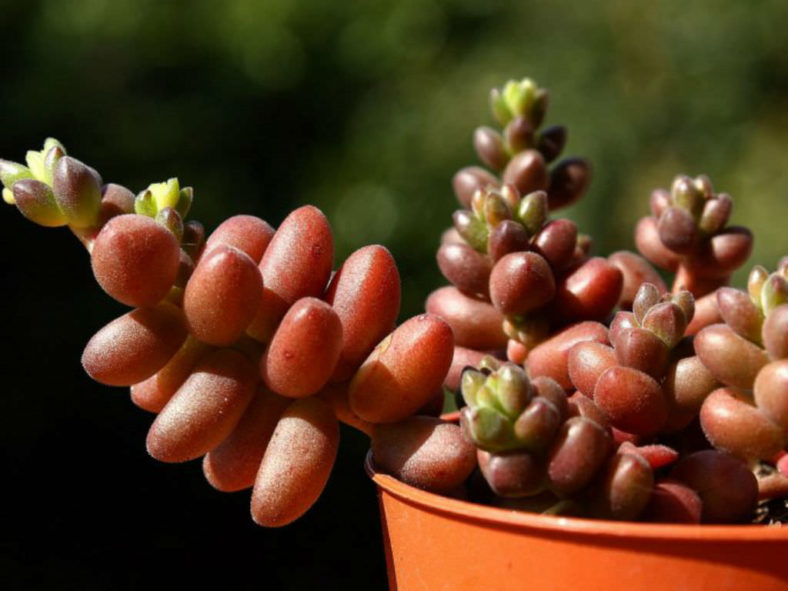Scientific Name
Sedum stahlii Solms
Common Name(s)
Baked Beans, Coral Beads, Coral Bells, Mexican Sedum
Scientific Classification
Family: Crassulaceae
Subfamily: Sempervivoideae
Tribe: Sedeae
Genus: Sedum
Origin
Sedum stahlii is native to Mexico. It grows on steep rocky slopes in Oaxaca, Puebla, and Veracruz at elevations that range from 3,840 to 8005 feet (1,170 to 2,440 m).
Description
Sedum stahlii is a small, much-branched succulent with spreading or trailing stems and fleshy, dark green leaves suffused with red or russet and covered with short, soft hair. It can reach a diameter of 12 inches (30 cm), forming loose mats. The leaves are opposite, oblong, elliptic, or spherical and can measure up to 0.5 inches (1.3 cm) long and 0.3 inches (0.8 cm) in diameter. They drop off almost as soon as you touch them.
The flowers are yellow, star-shaped, and usually 5-merous. They appear from late spring to early summer and can reach a diameter of up to 0.5 inches (1.2 cm).

Hardiness
USDA hardiness zones 7b to 11b: from 5 °F (−15 °C) to 50 °F (+10 °C).
How to Grow and Care
When growing Sedums, keep in mind that these plants need very little attention or care. They will thrive in conditions many other plants thrive in but do just as well in less hospitable areas. They are ideal for that part of your yard that gets too much sun or too little water to grow anything else. A common name for Sedum is Stonecrop because many gardeners joke that only stones need less care and live longer.
Sedum is easily planted. For shorter varieties, laying the plant on the ground where you want it to grow is usually enough to start it. The plant will send out roots from wherever the stem touches the ground and root itself. If you want to ensure the plant starts there, add a very thin soil covering.
You can break off one of the stems for taller varieties and push it into the ground where you want to grow it. The stem will root very easily, and a new plant will be established in a season or two.
Learn more at How to Grow and Care for Sedum.
Hybrids
Links
- Back to genus Sedum
- Succupedia: Browse succulents by Scientific Name, Common Name, Genus, Family, USDA Hardiness Zone, Origin, or cacti by Genus
Photo Gallery
Click on a photo to see a larger version.


